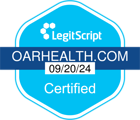The Recovery Industry Is Evolving to Include Medicine for AUD
Xenia Ellenbogen
Dec 09, 2024

An average day at a treatment center for alcohol misuse can include daily therapy, groups, time for exercise, and meetings. Sometimes, it also includes taking a pill to help curb cravings. The recovery industry is an umbrella term encompassing treatment for substance abuse, such as rehabilitation programs, counselors, and addiction psychiatrists. After years of medication underutilization, the industry has started shifting to include medication to help treat alcohol use disorder (AUD).
Alcohol misuse is a public health concern despite the drug and alcohol treatment industry’s market size of $35 billion. Treatment is disproportionately accessed: in 2023, 2.89 million people had AUD yet only 7.6% of that group received any treatment. The recovery industry could be shifting to include medication-assisted treatment to combat growing alcohol-related deaths in the United States, with 88,000 people dying per year (1).
When treatment centers offer medication for AUD, it’s called a medically-assisted treatment program (MAT). Medicine is used in conjunction with behavioral health treatment, such as therapy and groups. MAT is determined by the individual, their symptoms, and medical history.
How Are Recovery Programs Changing?
Harm Reduction
For a long time, the dominating approach to treating addictions has been one of abstinence. Formerly, abstinence was viewed as the most effective way to recover. However, abstinence isn’t always the most successful approach.
More recovery centers are adapting to harm-reduction approaches, implementing practices to minimize the damage of alcohol misuse. An example of harm reduction implementation with alcohol could be taking naltrexone before drinking to curb the urge for more, leading to a safer drive home.
Redefining Recovery
Many treatment programs inherited their definitions of recovery from 12-step programs, where abstinence was the only standard. In alcohol treatment literature, there’s no universal definition for recovery. In 2023, the National Institute on Alcohol Abuse and Alcoholism (NIAA) said that although abstinence-based recovery is crucial for specific subgroups, harm reduction has become a critical part of the conversation for the recovery process (2).
One guiding thought on this comprehensive understanding is the question: how do we define recovery? NIAA explains that recovery is “a process through which a person achieves remission from AUD as well as cessation from heavy alcohol consumption.” Decreasing heavy alcohol consumption is, of course, not an abstinence-only goal.
Redefining Success
The new definition of recovery leaves room to define success in multiple ways, recognizing that many fail to leave AUD treatment and continue abstinence. The benefits of decreased drinking are wide-ranging. Reductions in heavy drinking reduce public health risks and alcohol-related injury. Alcohol reduction may encourage people to seek treatment, NIAA notes.
The Potential To Decrease Relapse Rates
Relapse is a common part of addiction—between 40-62% of individuals will relapse (3). Support can plummet as soon as people leave addiction centers, leading to potential relapse. Medicine offers continued support.
Naltrexone has been shown to help prevent relapse rates. Specifically, utilizing both behavioral health and medication for AUD can reduce relapse to heavy drinking (4). Medications started after someone detoxes can have significant impacts on their relapse rates.
An Industry Shift In Medication Perspectives
Major treatment centers across the United States now implement medicine as part of a comprehensive approach and for good reasons. Using medicine can help improve quality of life. Someone taking naltrexone could get and maintain employment sooner, creating more stable housing and decreasing stress. Medication could also improve treatment retention rates (5).
A 2020 study notes that because substance abuse disorders are so stigmatized, medications to treat them are thereby stigmatized, too. While more people begin to understand that addiction is a brain disorder and not someone’s fault or wrongdoing, more adopt a broader perspective on the use of medication to treat these disorders (6). In a similar way that people understand mental health conditions like depression can be treated with medicine, so can AUD. The alcohol treatment industry has faced heavier and slower-to-shake stigma.
The Food and Drug Administration (FDA) has also played a role in industry changes. Formerly, the FDA only considered success as abstinence with pharmaceutical trials for medications treating addiction. Now, the FDA has expressed openness to different endpoints as markers of success, like reductions in heavy drinking.
Though not AUD-specific, it’s significant to track industry changes through a 2018 federal funding opportunity that made 1 billion dollars in grants available to treatment programs for opioid use, explicitly outlining that eligibility for the grants entailed medication utilization, recognizing the potential benefits.
A 2016 study examined the role of research on AUD services around treatment gaps and found that sometimes, providers had difficulty obtaining licenses to administer certain medications. The study noted progress with initiatives like Advancing Recovery and the Medication Research Partnership to help private and public sectors facilitate the use of medicines for AUD. This initiative tested organizational changes to increase access to medicine and found new approaches successful across treatment centers (7).
Do Mutual Support Groups Embrace Medication?
The viewpoints of Alcoholics Anonymous (AA) on medication remain fairly dependent on the individual meeting. Over half of the sample in a much earlier 2000 study found that AA members thought medication was a good idea or might be, though some people report adverse attitudes about medication (8).
Other mutual support groups, like SMART Recovery, are supportive of members using science-backed medicine and medicine obtained legally for the treatment of addiction, publicly releasing this opinion in 2005 (9).
Those in recovery who felt unwelcome at Alcoholics Anonymous but still wanted the support of a group began Medication-Assisted Treatment Anonymous (MARA), a 12-step group for people utilizing medicine as part of their recovery (10).
Thousands of people in America go through alcohol treatment programs each year. The industry is slowly starting to shift to utilize an evidence-backed approach to treatment for its ability to decrease relapse rates and mitigate alcohol-related deaths and injuries. People undergoing treatment deserve access to all evidence-based strategies that can strengthen recovery and further equip them for success in achieving their recovery goals.
About The Author
Xenia Ellenbogen (she/they) is a journalist specializing in health, mental health, and wellness. Her writing has appeared in publications such as Everyday Health, Well+Good, Rewire News Group, Prism, and more.
Latest Articles

Feb 21, 2025
Alcohol And Your Heart: Happy Hour And Hypertension
Naheed Ali, MD, PhD, ScD

Feb 19, 2025
Alcoholic Hepatitis: Spot The Signs, Reclaim Your Health
Naheed Ali, MD, PhD, ScD

Feb 17, 2025
Alcohol Recovery Coaching Transformed My Life
Sam Dylan Finch

Feb 14, 2025
How Naltrexone Works To Transform Your Relationship With Alcohol
Naheed Ali, MD, PhD, ScD

Feb 13, 2025
How To Stop Alcohol Cravings: 8 Medications & Natural Remedies
Medically reviewed by Joshua D Lee, MD, MSc

